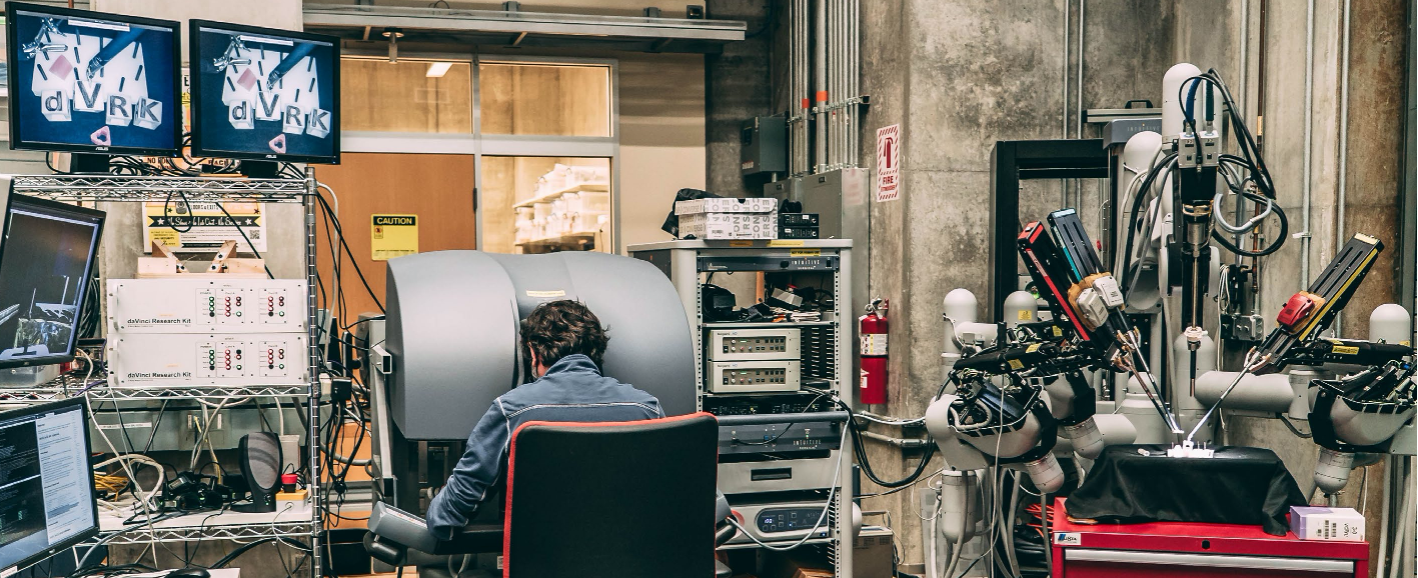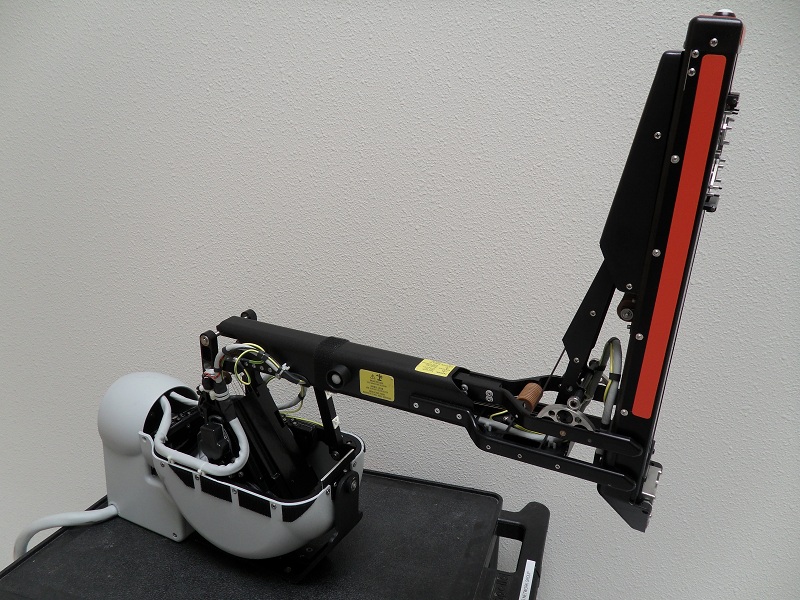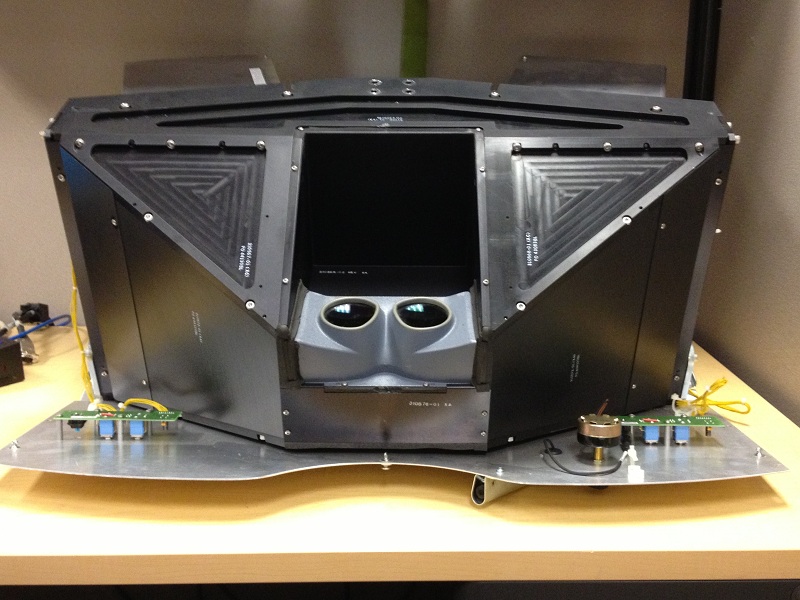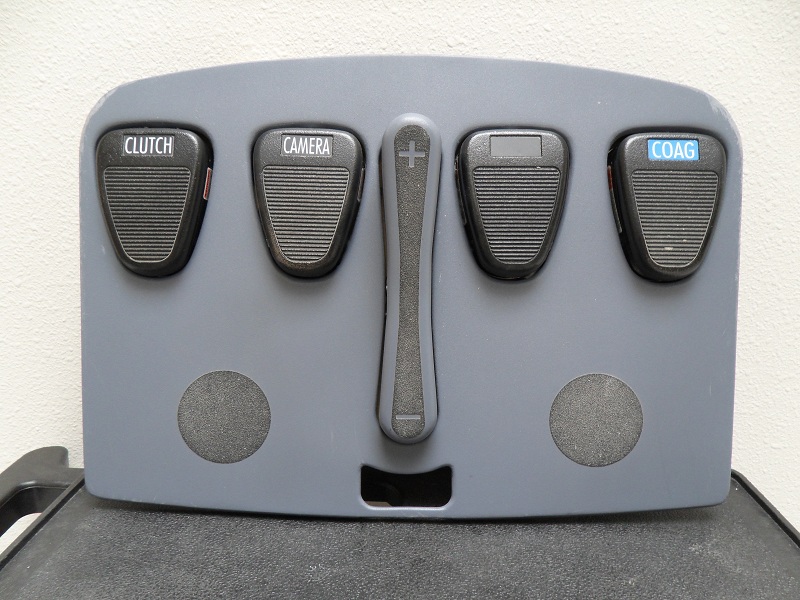Difference between revisions of "Main Page"
(→The User Group) |
(→The User Group) |
||
| (7 intermediate revisions by the same user not shown) | |||
| Line 57: | Line 57: | ||
| align="left" | [[DVRK:GroupPages:WPI | WPI Group Page]] | | align="left" | [[DVRK:GroupPages:WPI | WPI Group Page]] | ||
|- | |- | ||
| − | | | + | | rowspan="2" | [http://charm.stanford.edu/| Stanford University] |
| align="left" | Allison Okamura | | align="left" | Allison Okamura | ||
| − | | align="left" | [[DVRK:GroupPages:Stanford | | + | | align="left" | [[DVRK:GroupPages:CHARM Lab | CHARM Group Page]] |
| + | |- | ||
| + | | align="left" | Cyril Ryan Zakka | ||
| + | | align="left" | [[DVRK:GroupPages:Stanford | Group Page]] | ||
|- | |- | ||
| align="left" | [http://www.ece.ubc.ca/~tims/RCL.htm|The University of British Columbia] | | align="left" | [http://www.ece.ubc.ca/~tims/RCL.htm|The University of British Columbia] | ||
| Line 66: | Line 69: | ||
|- | |- | ||
| rowspan="2" | Vanderbilt University | | rowspan="2" | Vanderbilt University | ||
| − | | align="left" | [http://arma.vuse.vanderbilt.edu/ | + | | align="left" | [http://arma.vuse.vanderbilt.edu/ ARMA] - Nabil Simaan |
| − | | align="left" | [[DVRK:GroupPages:VanderbiltARMA | | + | | align="left" | [[DVRK:GroupPages:VanderbiltARMA| ARMA Group Page]] |
|- | |- | ||
| − | | align="left" | [https://my.vanderbilt.edu/maple-lab/ | + | | align="left" | [https://my.vanderbilt.edu/maple-lab/ MAPLE] - Jie Ying Wu |
| − | | align="left" | [[DVRK:GroupPages:VanderbiltMAPLE | MAPLE Group Page]] | + | | align="left" | [[DVRK:GroupPages:VanderbiltMAPLE| MAPLE Group Page]] |
|- | |- | ||
| align="left" | University of California, Berkeley | | align="left" | University of California, Berkeley | ||
| Line 109: | Line 112: | ||
| align="left" | [https://www.lerner.ccf.org/ Rob Colbrunn] | | align="left" | [https://www.lerner.ccf.org/ Rob Colbrunn] | ||
| align="left" | [[DVRK:GroupPages:Cleveland Clinic| Cleveland Clinic]] | | align="left" | [[DVRK:GroupPages:Cleveland Clinic| Cleveland Clinic]] | ||
| − | |||
| − | |||
| − | |||
| − | |||
|- | |- | ||
| align="left" | Purdue University | | align="left" | Purdue University | ||
| Line 129: | Line 128: | ||
|- | |- | ||
| align="left" | [https://www.nih.gov/ National Institutes of Health] | | align="left" | [https://www.nih.gov/ National Institutes of Health] | ||
| − | | align="left" | Sheng Xu | + | | align="left" | Bradford Wood <br> Sheng Xu |
| align="left" | [[DVRK:GroupPages:NIH| NIH Group Page]] | | align="left" | [[DVRK:GroupPages:NIH| NIH Group Page]] | ||
|- | |- | ||
| Line 167: | Line 166: | ||
|- | |- | ||
| align="left" | Imperial College | | align="left" | Imperial College | ||
| − | | align="left" | [http://www.imperial.ac.uk/people/g.z.yang | + | | align="left" | [http://www.imperial.ac.uk/people/g.z.yang Ferdinando Rodriguez y Baena] |
| align="left" | [[DVRK:GroupPages:Imperial College| Imperial College]] | | align="left" | [[DVRK:GroupPages:Imperial College| Imperial College]] | ||
|- | |- | ||
| Line 179: | Line 178: | ||
|- | |- | ||
| align="left" | Politecnico di Milano | | align="left" | Politecnico di Milano | ||
| − | | align="left" | [ | + | | align="left" | [https://nearlab.polimi.it/medical/ NEARLab] - Elena De Momi |
| align="left" | [[DVRK:GroupPages:Politecnico di Milano| Polimi Group Page]] | | align="left" | [[DVRK:GroupPages:Politecnico di Milano| Polimi Group Page]] | ||
|- | |- | ||
| Line 201: | Line 200: | ||
| align="left" | MITIC Lab - Alberto Arezzo | | align="left" | MITIC Lab - Alberto Arezzo | ||
| align="left" | [[DVRK:GroupPages: UNITO| University of Torino]] | | align="left" | [[DVRK:GroupPages: UNITO| University of Torino]] | ||
| + | |- | ||
| + | | align="left" | Max Planck Institute | ||
| + | | align="left" | Guido Caccianiga | ||
| + | | align="left" | [[DVRK:GroupPages: Max Planck Institute| Max Planck Institute]] | ||
|- | |- | ||
! style="text-align:left;" ; colspan="6" | '''Asia''' | ! style="text-align:left;" ; colspan="6" | '''Asia''' | ||
Latest revision as of 23:40, 21 September 2023
Welcome to the da Vinci Research Kit wiki community

|
This wiki is home to users of the Research Kit for the da Vinci Surgical System.
Contents
The da Vinci Research Kit
The da Vinci Research Kit (dVRK) is a collection of first-generation da Vinci components that can be used to assemble a research platform for exploring telerobotics in medicine. The idea behind this initiative is to provide the core hardware to a network of researchers worldwide, by repurposing retired clinical systems. This hardware is provided in combination with dedicated electronics to create a system that enables researchers to access to any level of the control system of the robot as well as the data streams within it.
Background
The da Vinci Research Kit research platform was developed through a collaboration between academic institutions, Johns Hopkins University and Worcester Polytechnic Institute, and Intuitive Surgical Inc. in 2012. The introduction of the dVRK allowed research centers to share a common hardware platform without restricted access to the underlying back-and forward control system. This has led to a significant boost to the development of research in surgical robotics during the last decade and generated new opportunities for collaboration and to connect a surgical robot to other technologies. Today, the dVRK consortium includes mostly universities and academic centers within hospitals, and some companies.
Components
The Kit contains the following components:
- Two da Vinci Master Tool Manipulators (MTMs)
- Two da Vinci Patient Side Manipulators (PSMs)
- A stereo viewer
- A foot pedal tray
- Manipulator Interface Boards (dMIBs)
- Basic accessory kit
See the system in action on YouTube (credit: the JHU team).
Documentation
The User Group
Publications
Publications associated with the use of dVRK currently online are more than 290. And this includes international conferences or journals, as well as publications related to workshops or symposiums, and open-access articles stored in arXiv. The published works range between many fields like automation, skill assessment and gesture recognition, hardware implementation and integration, system simulation and modelling, imaging and vision.
Here are listed some of the most interesting and up to date reviews where you can find most of the dVRK related articles:
2022
2021
2020
- R. H. Taylor, P. Kazanzides, G. S. Fischer, and N. Simaan, “Medical robotics and computer-integrated interventional medicine,” in Biomedical Information Technology, Elsevier, 2020.
- A. Lasso and P. Kazanzides, “System integration,” in Handbook of Medical Image Computing and Computer Assisted Intervention, Elsevier, 2020.
- A. E. Abdelaal, P. Mathur, and S. E. Salcudean, “Robotics In Vivo: A Perspective on Human–Robot Interaction in Surgical Robotics,” Annu. Rev. Control. Robot. Auton. Syst., vol. 3, 2020.
2019
- R. Nagyné Elek and T. Haidegger, “Robot-Assisted Minimally Invasive Surgical Skill Assessment—Manual and Automated Platforms,” Acta Polytech. Hungarica, vol. 16, no. 8, 2019.
- T. D. Nagy and T. Haidegger, “Recent Advances in Robot-Assisted Surgery: Soft Tissue Contact Identification,” in 2019 IEEE 13th International Symposium on Applied Computational Intelligence and Informatics (SACI), 2019.
- H. Nakawala et al., “Requirements elicitation for robotic and computer-assisted minimally invasive surgery,” Int. J. Adv. Robot. Syst., vol. 16, no. 4, 2019.
- T. Haidegger, “Autonomy for Surgical Robots: Concepts and Paradigms,” IEEE Trans. Med. Robot. Bionics, vol. 1, no. 2, 2019.
- F. Ficuciello, G. Tamburrini, A. Arezzo, L. Villani, and B. Siciliano, “Autonomy in surgical robots and its meaningful human control,” Paladyn, J. Behav. Robot., vol. 10, no. 1, 2019.
- S. O’Sullivan et al., “Legal, regulatory, and ethical frameworks for development of standards in artificial intelligence (AI) and autonomous robotic surgery,” Int. J. Med. Robot. Comput. Assist. Surg., vol. 15, no. 1, 2019.
- L. Qian, J. Y. Wu, S. DiMaio, N. Navab, and P. Kazanzides, “A Review of Augmented Reality in Robotic-Assisted Surgery,” IEEE Trans. Med. Robot. Bionics, 2019.
2018
2017
2016
2015
- Á. Takács et al., “Joint platforms and community efforts in surgical robotics research,” MACRo 2015, vol. 1, no. 1, 2015.



